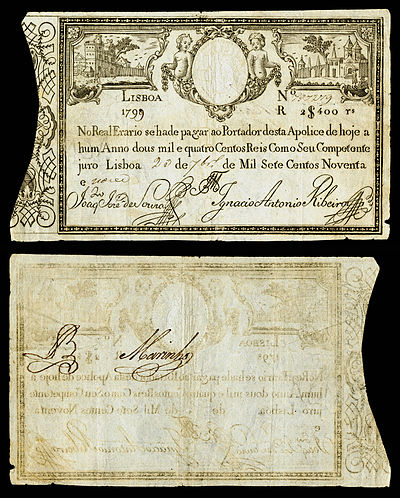Template:POTD/2020-04-13
This picture shows a 2,400-real banknote issued as part of Portugal's second issue of paper money in 1798–99. The Portuguese text on the note's obverse (top) translates to: 'The Royal Treasury has to pay the bearer of this policy within one year of today two thousand and four hundred réis. As its representative I swear, Lisbon, 23 April 1799.' It was thus a receipt payable to the bearer of the document, rather than the original depositor. The curved cut in the scrollwork in the left margin was an early anti-counterfeiting measure; the severed portion was retained by the issuing authority and could be compared to the note when it was presented for payment. This banknote is now in the National Numismatic Collection at the Smithsonian Institution's National Museum of American History.Banknote design credit: Imperial Treasury, Kingdom of Portugal; photographed by Andrew Shiva

